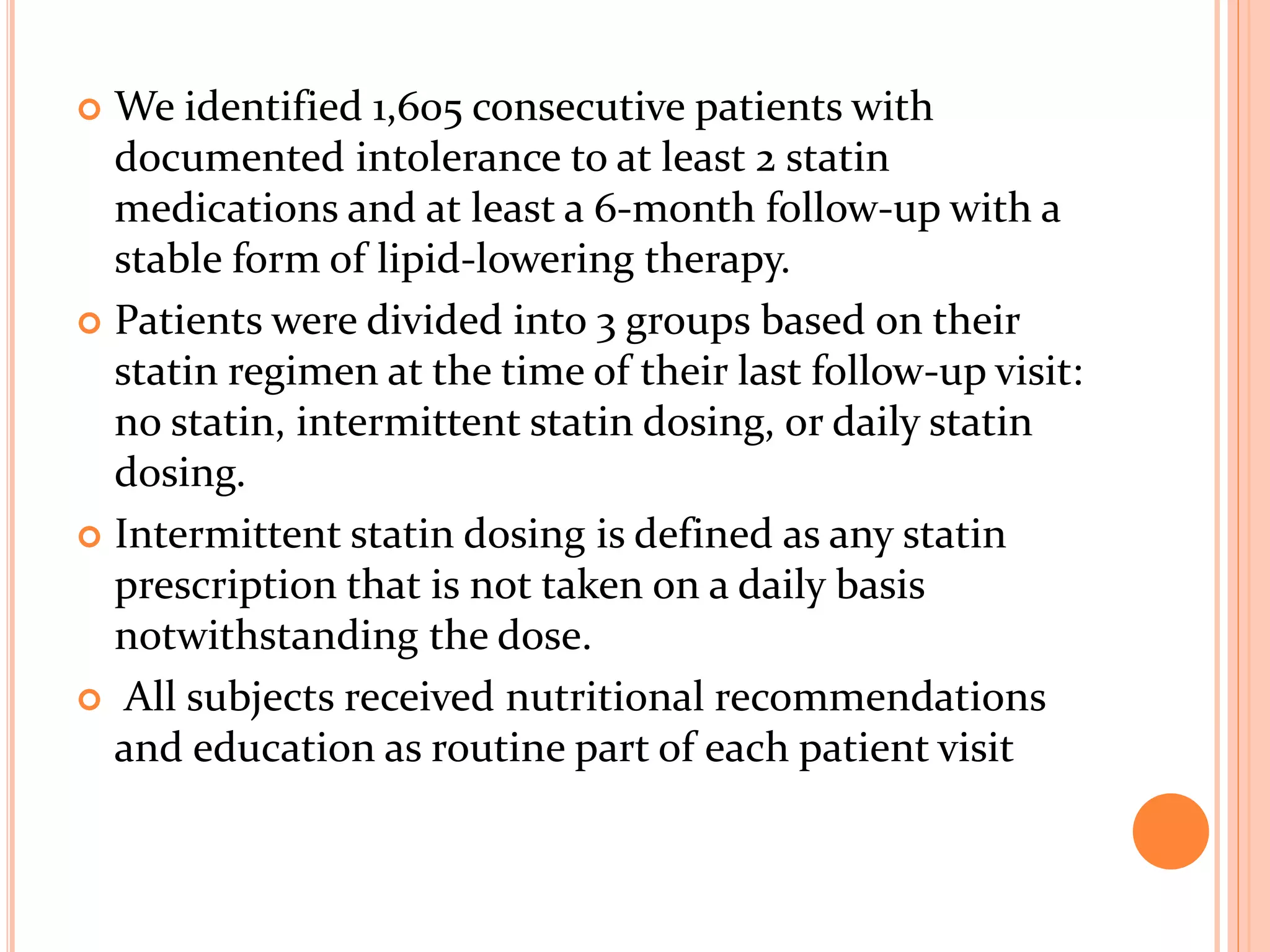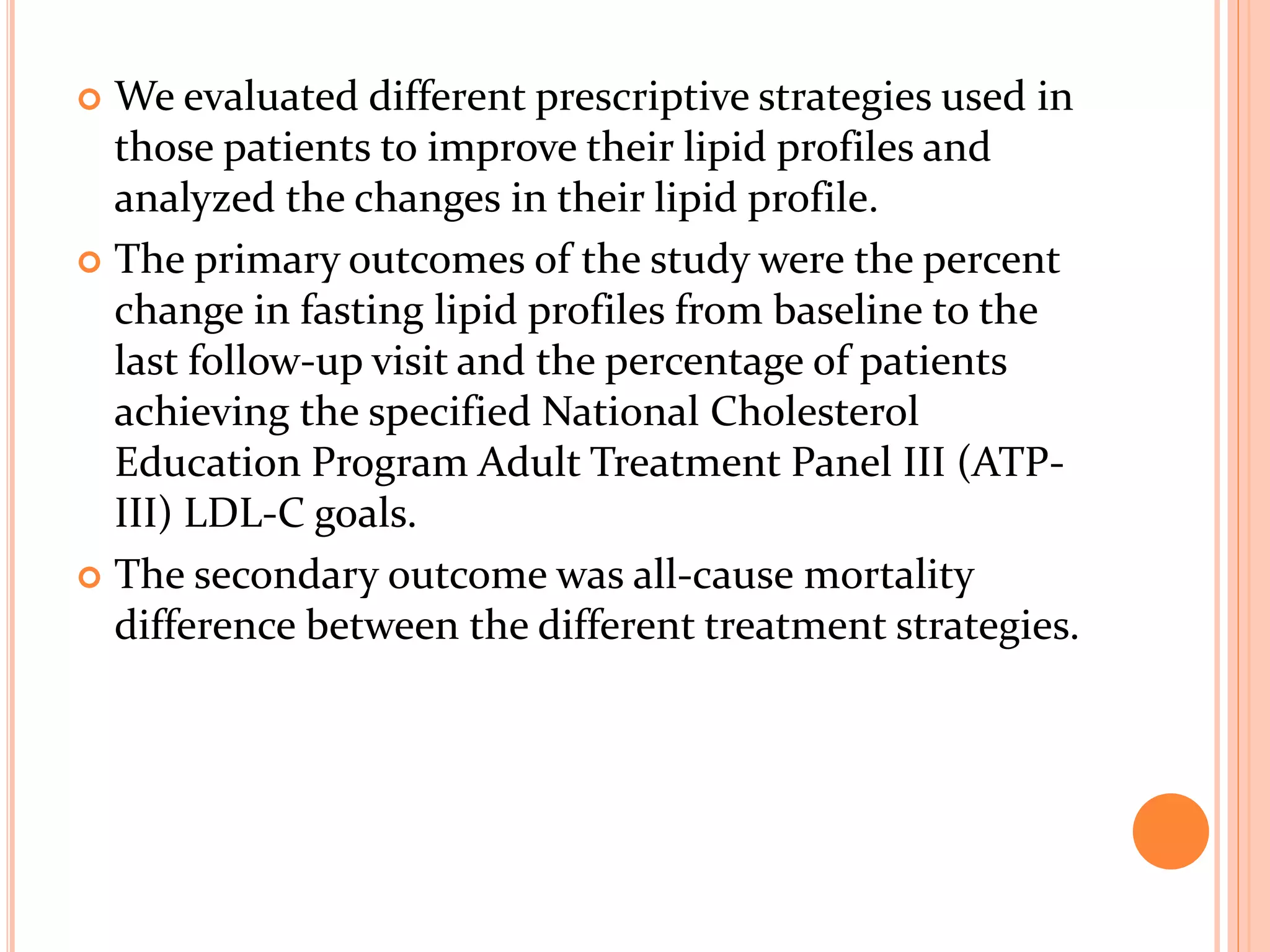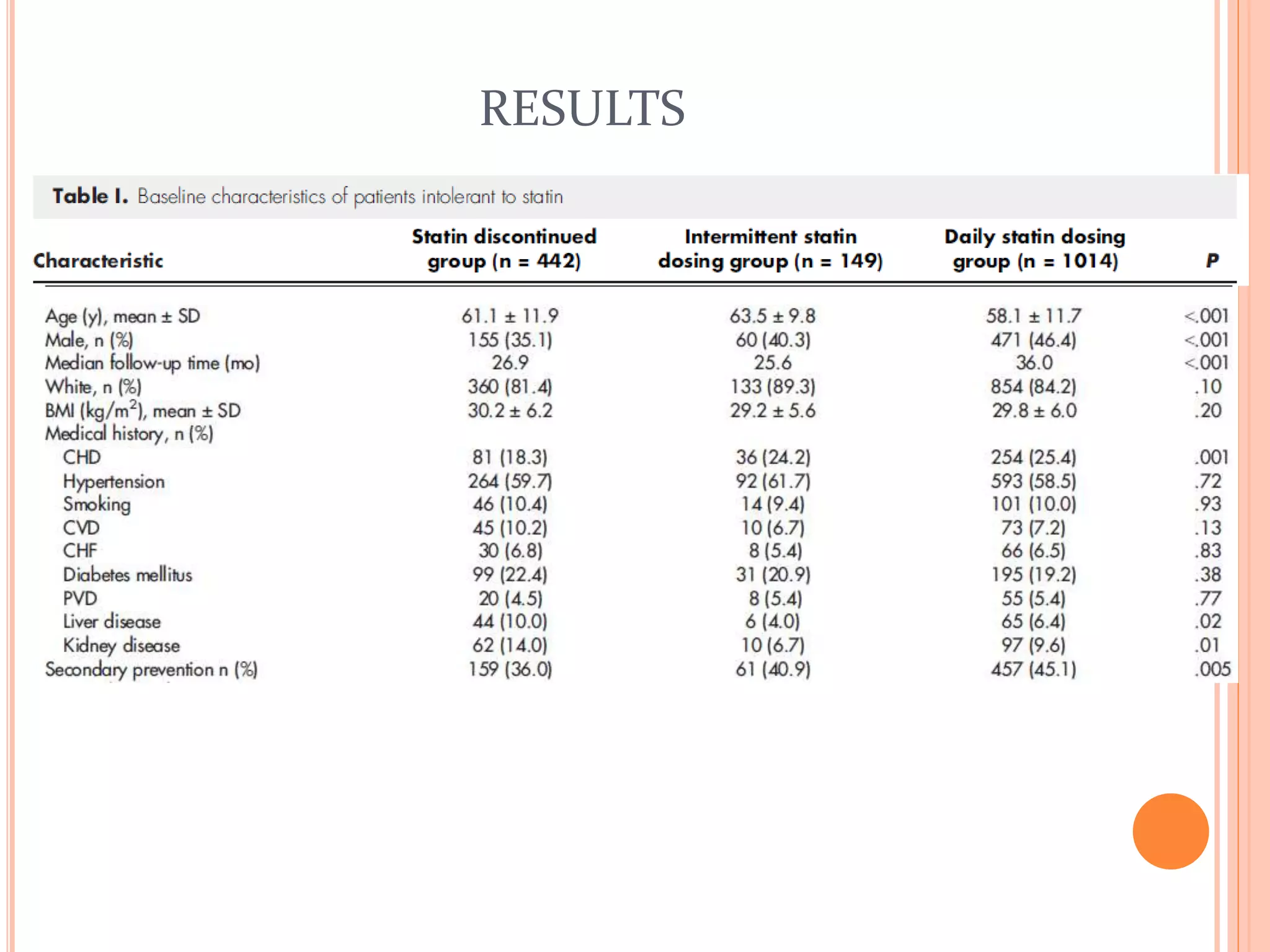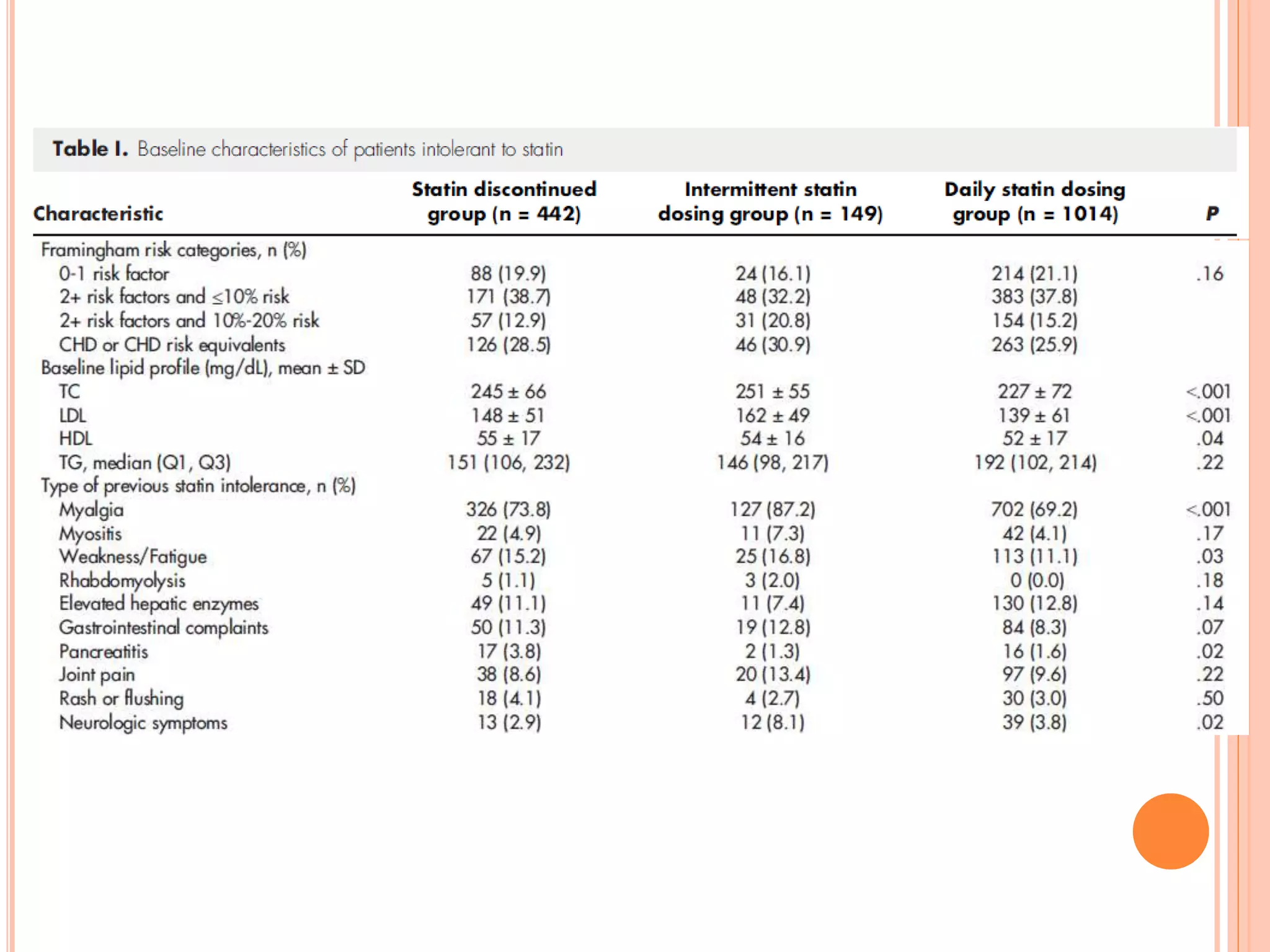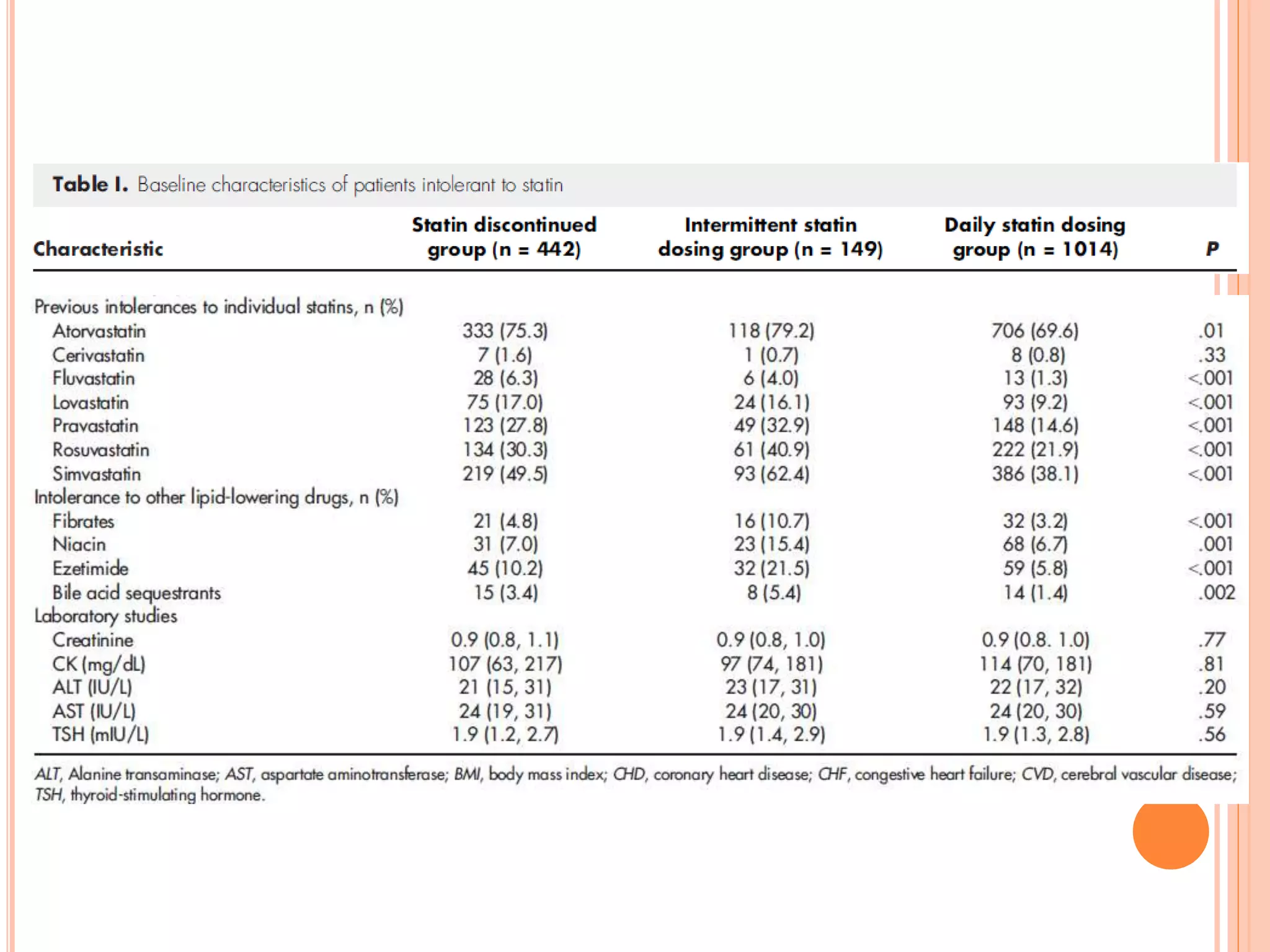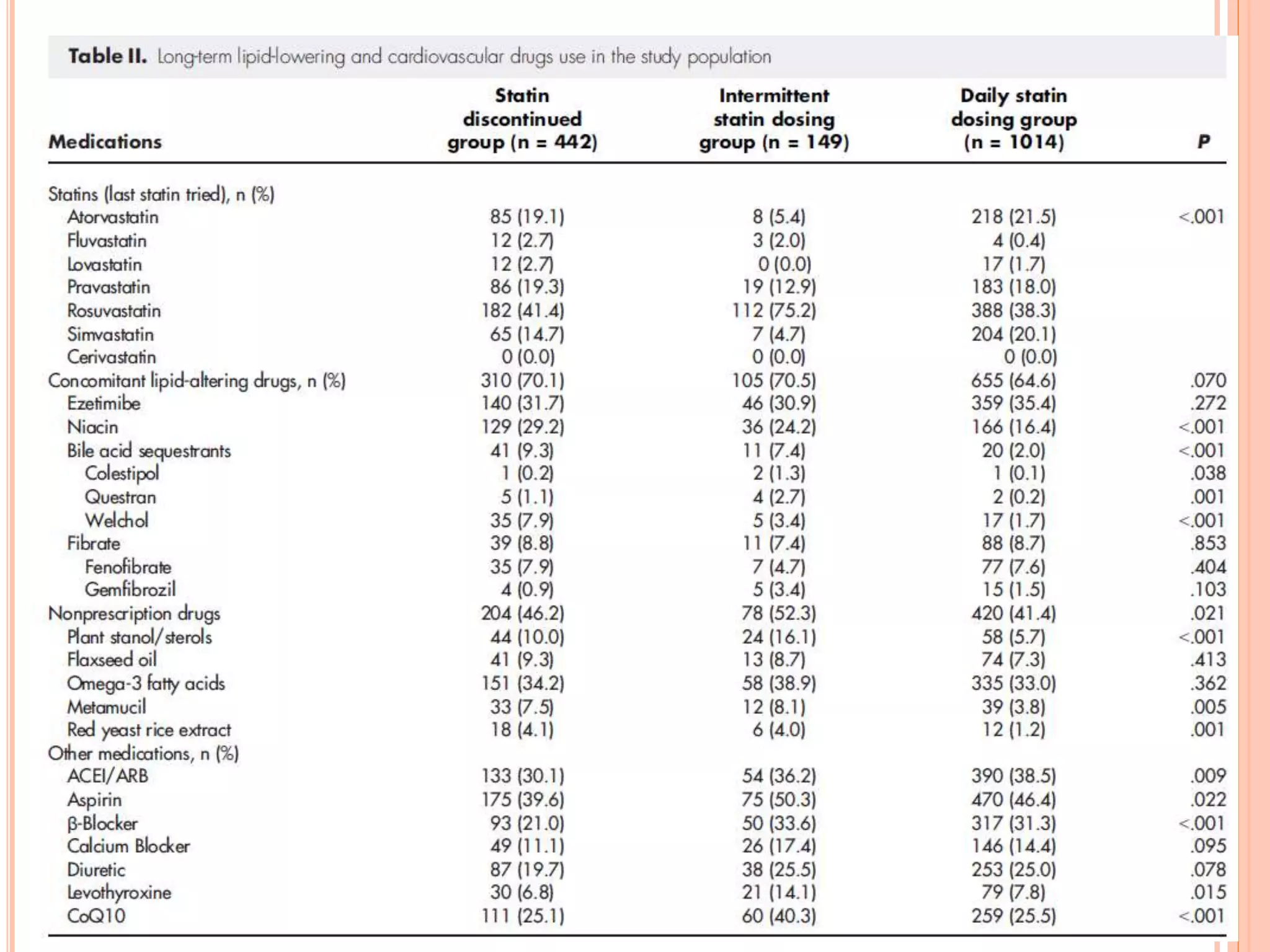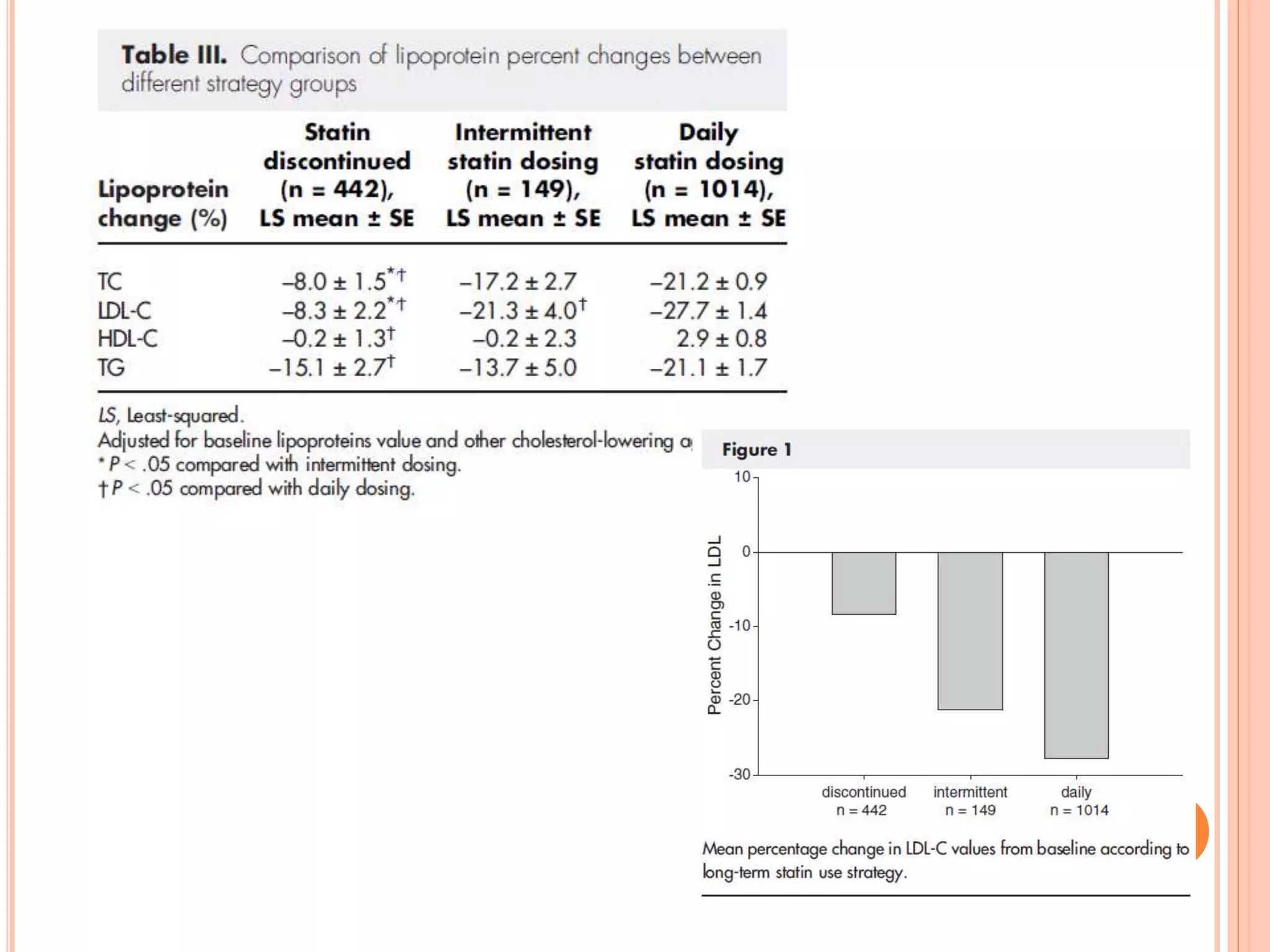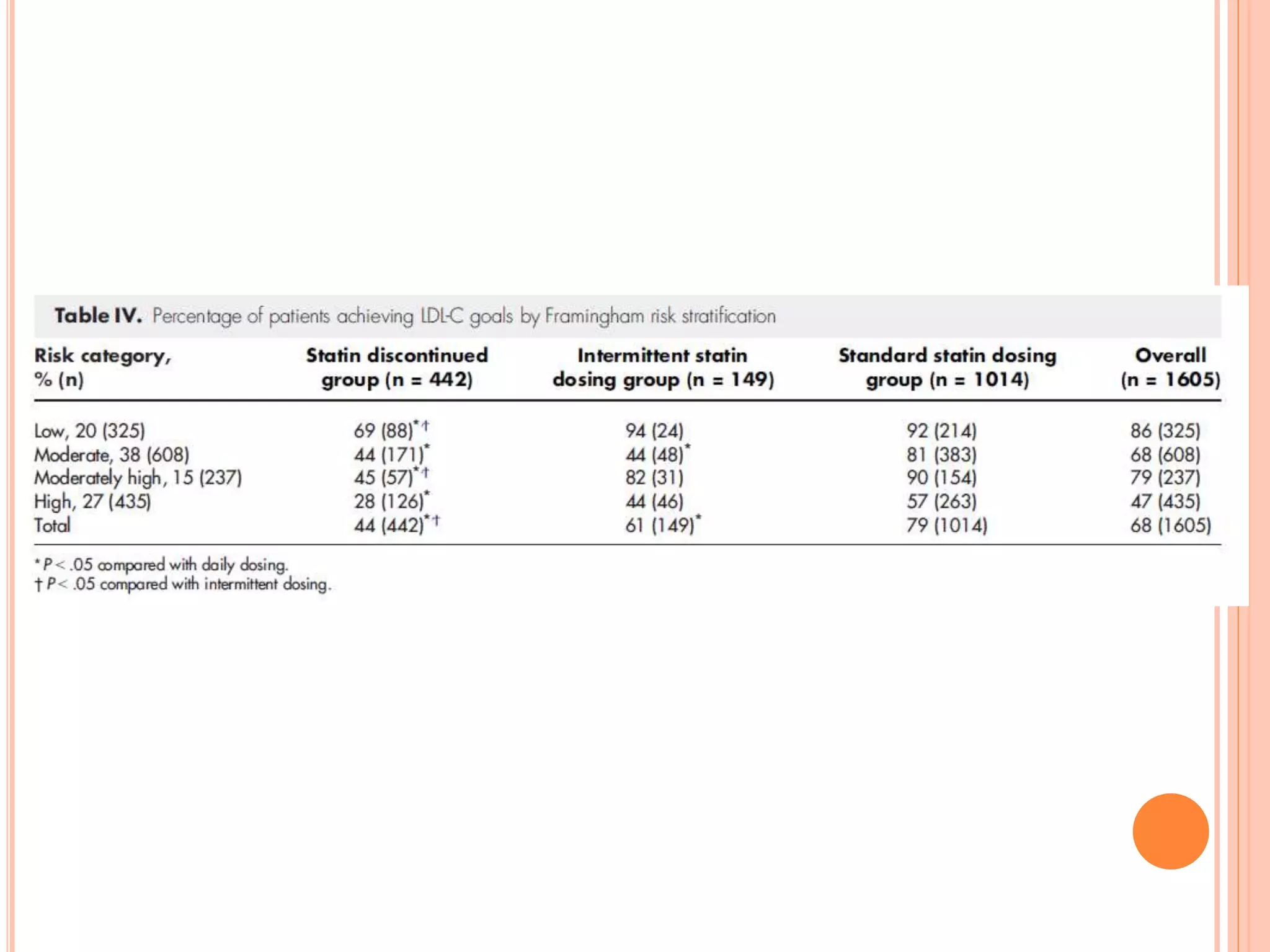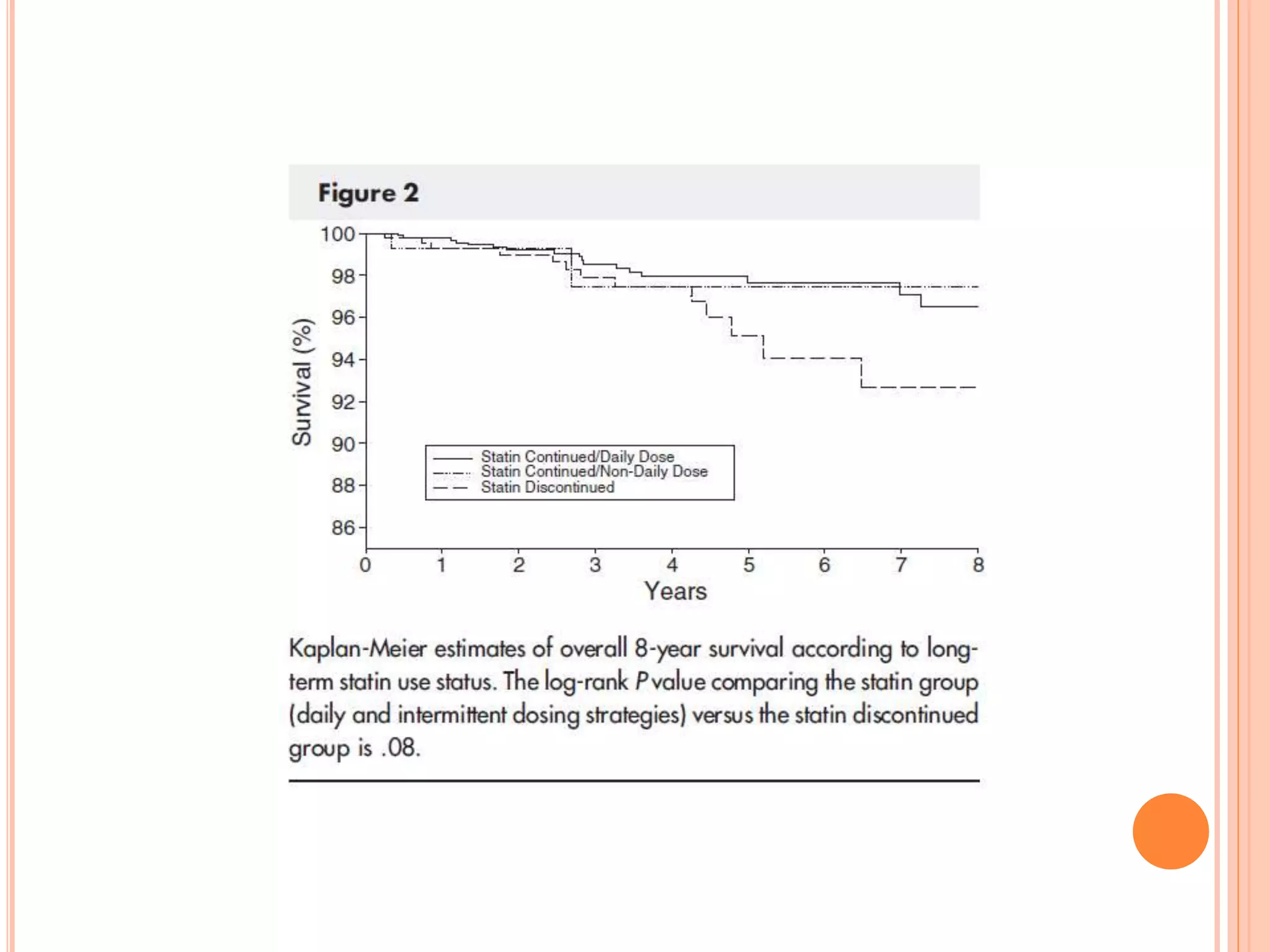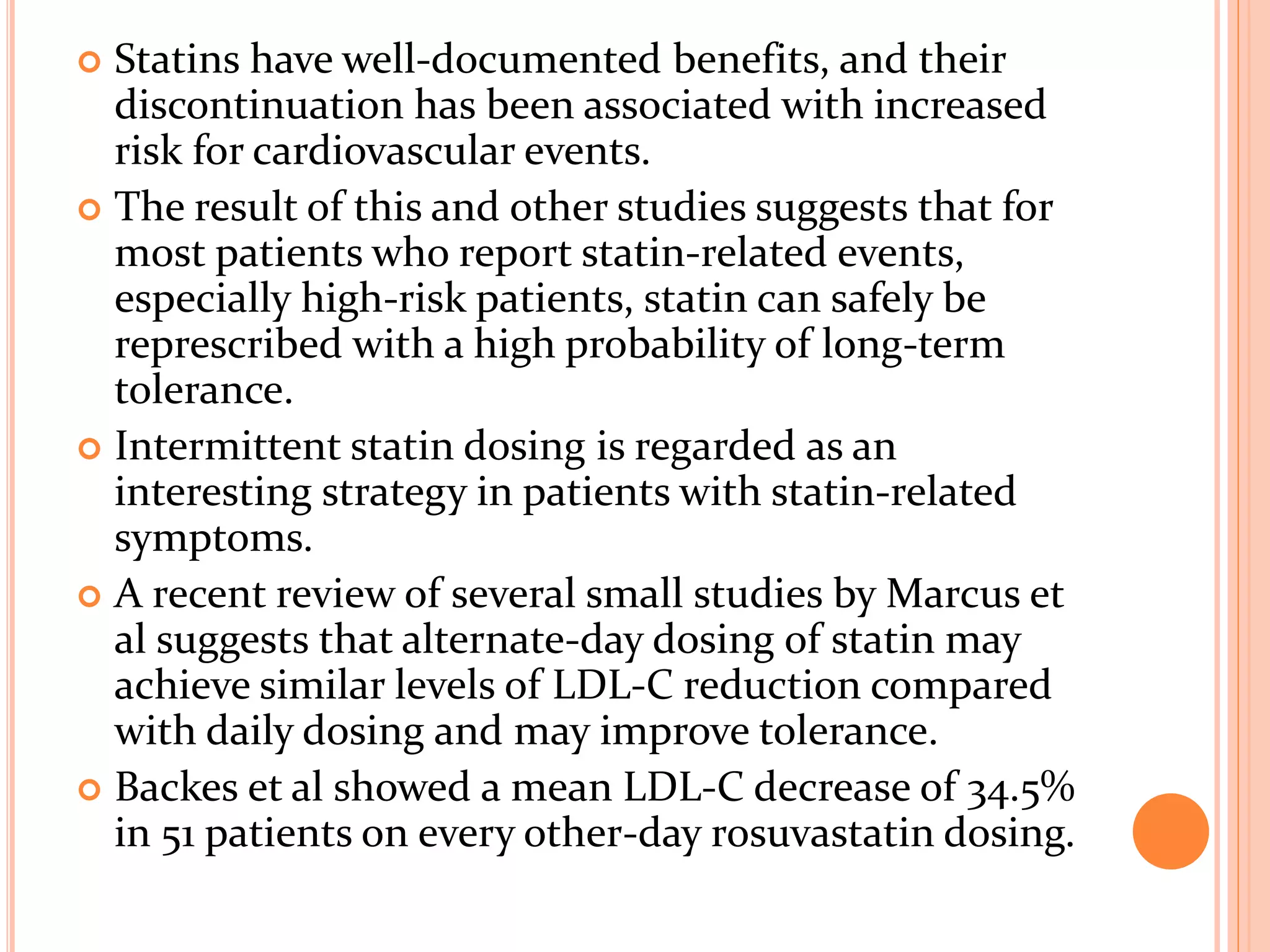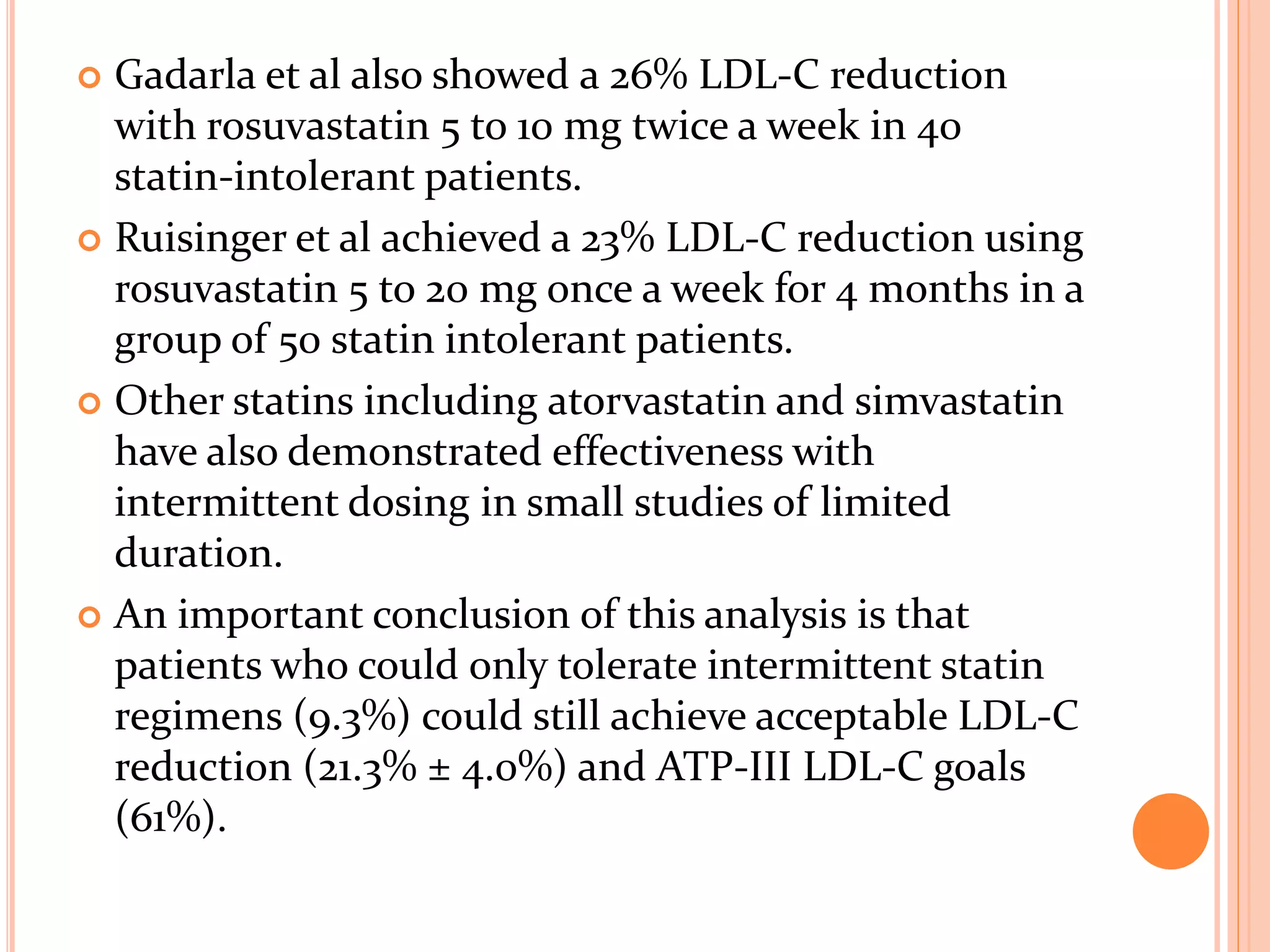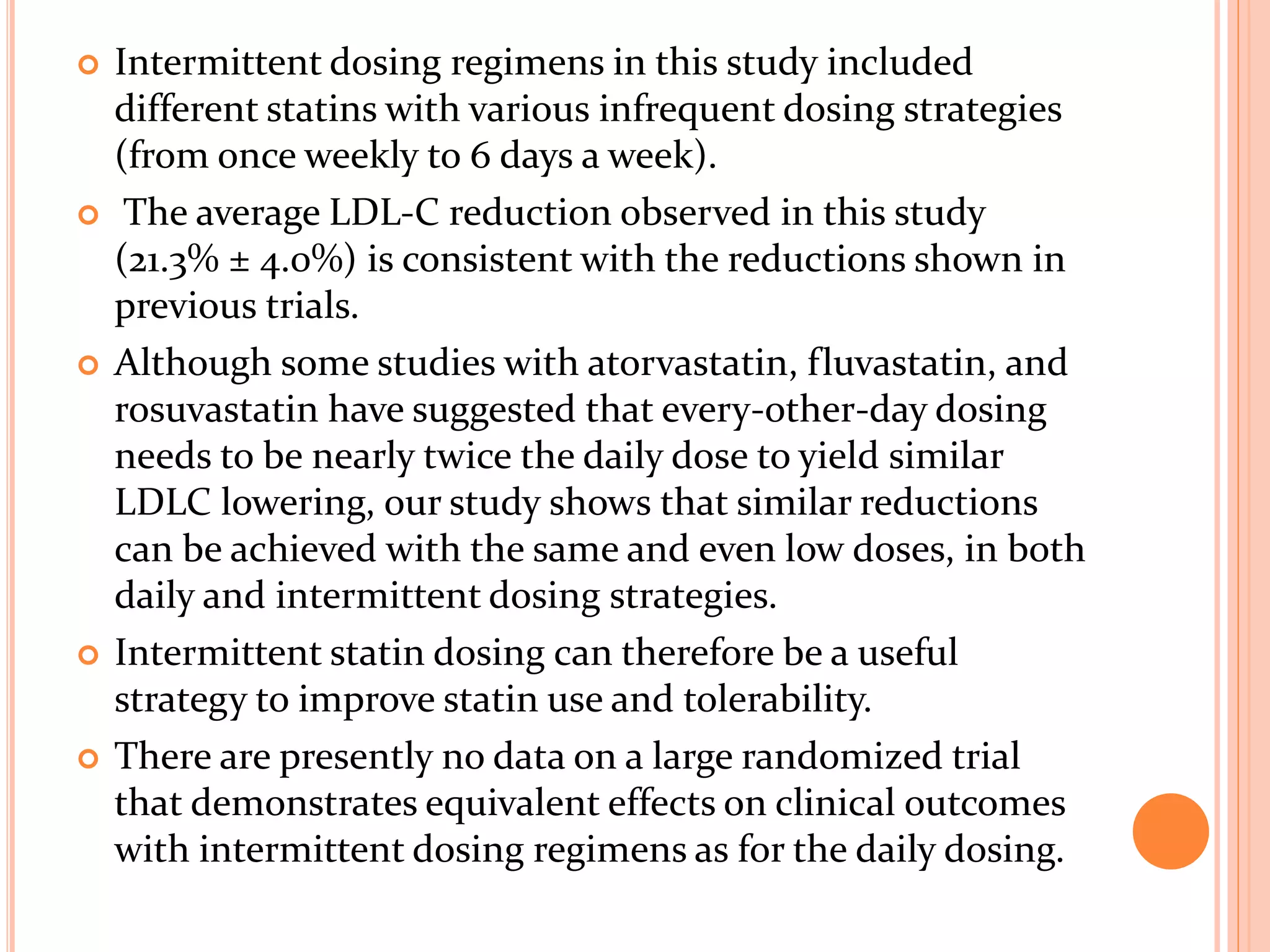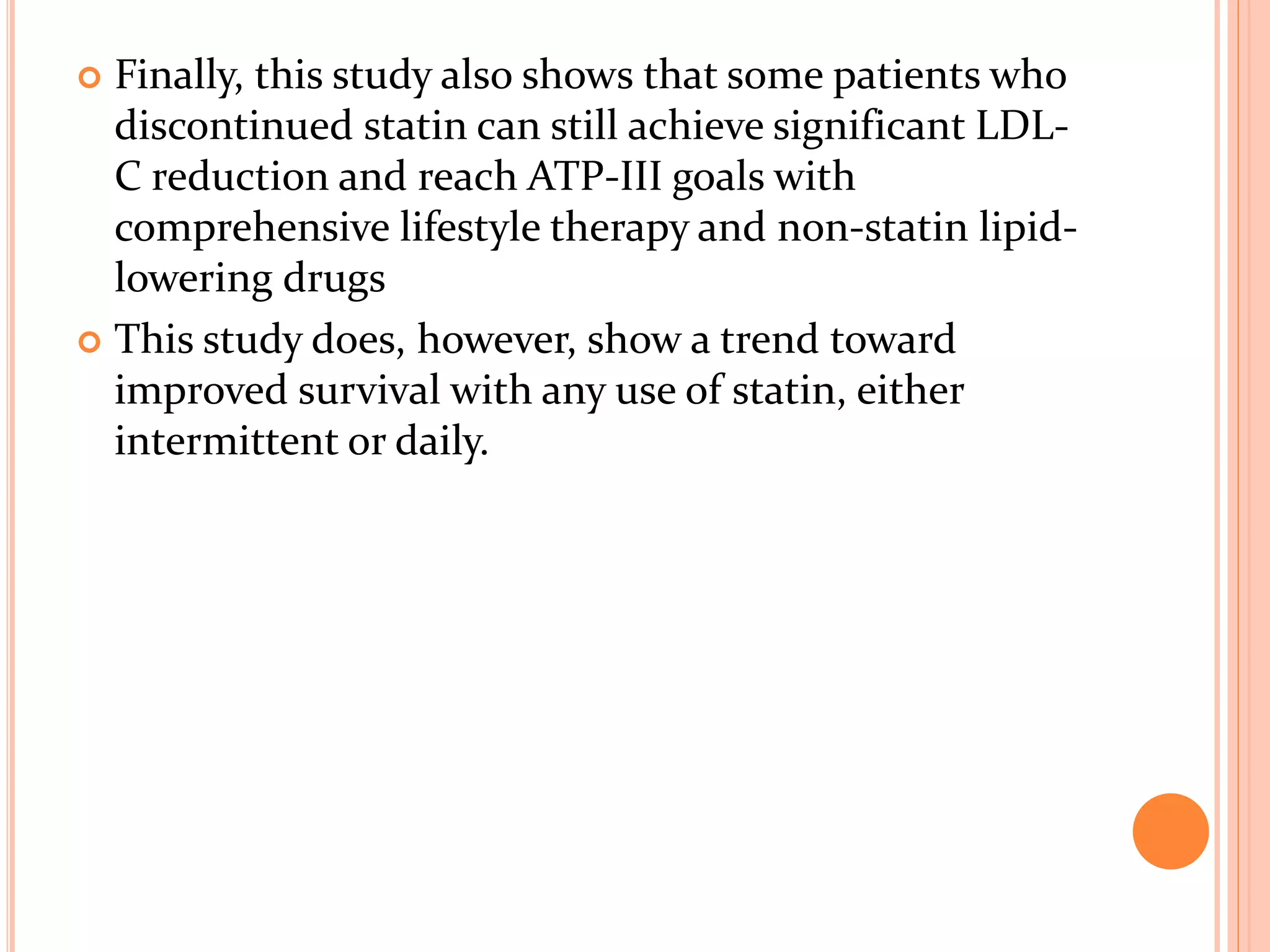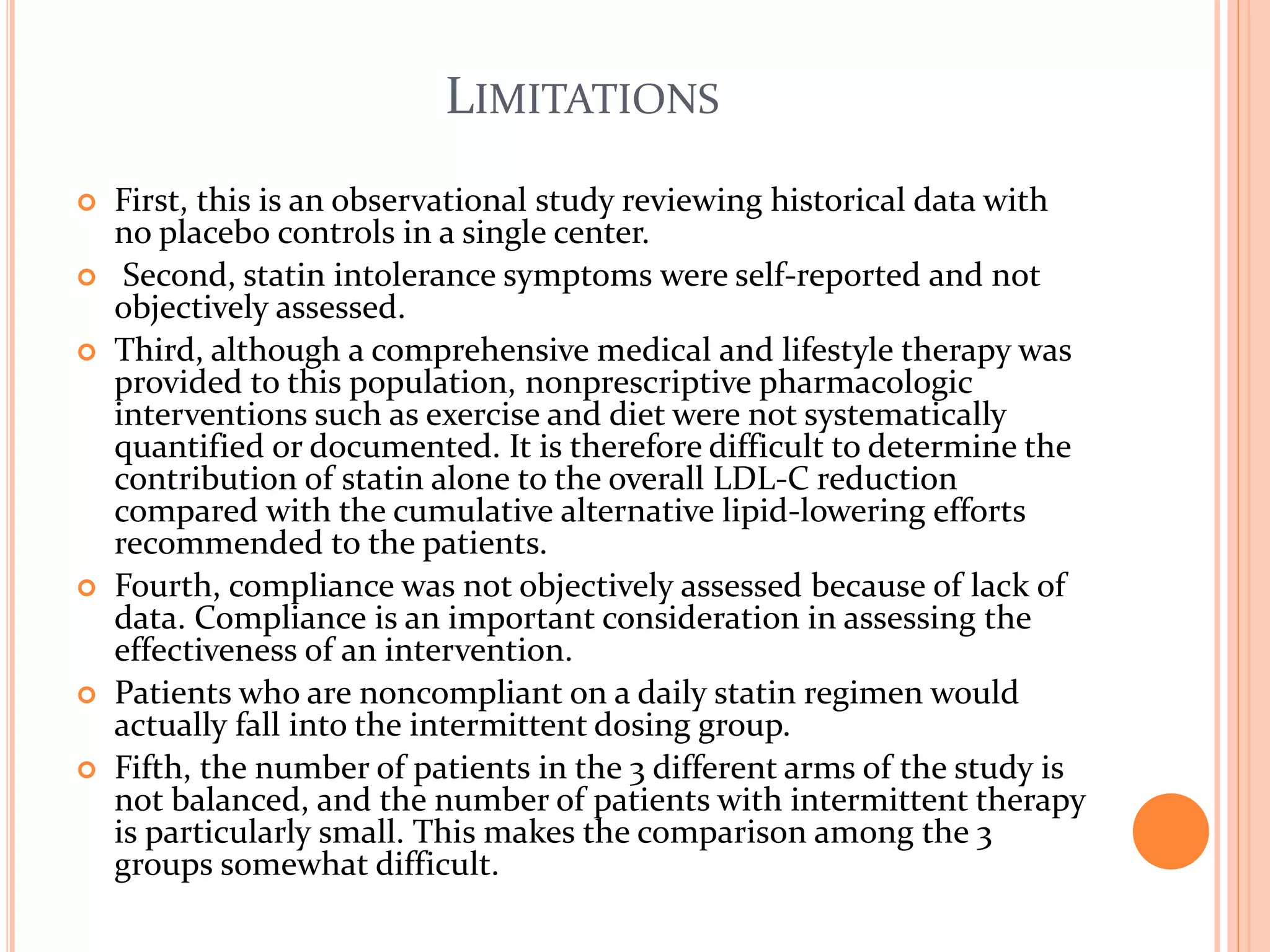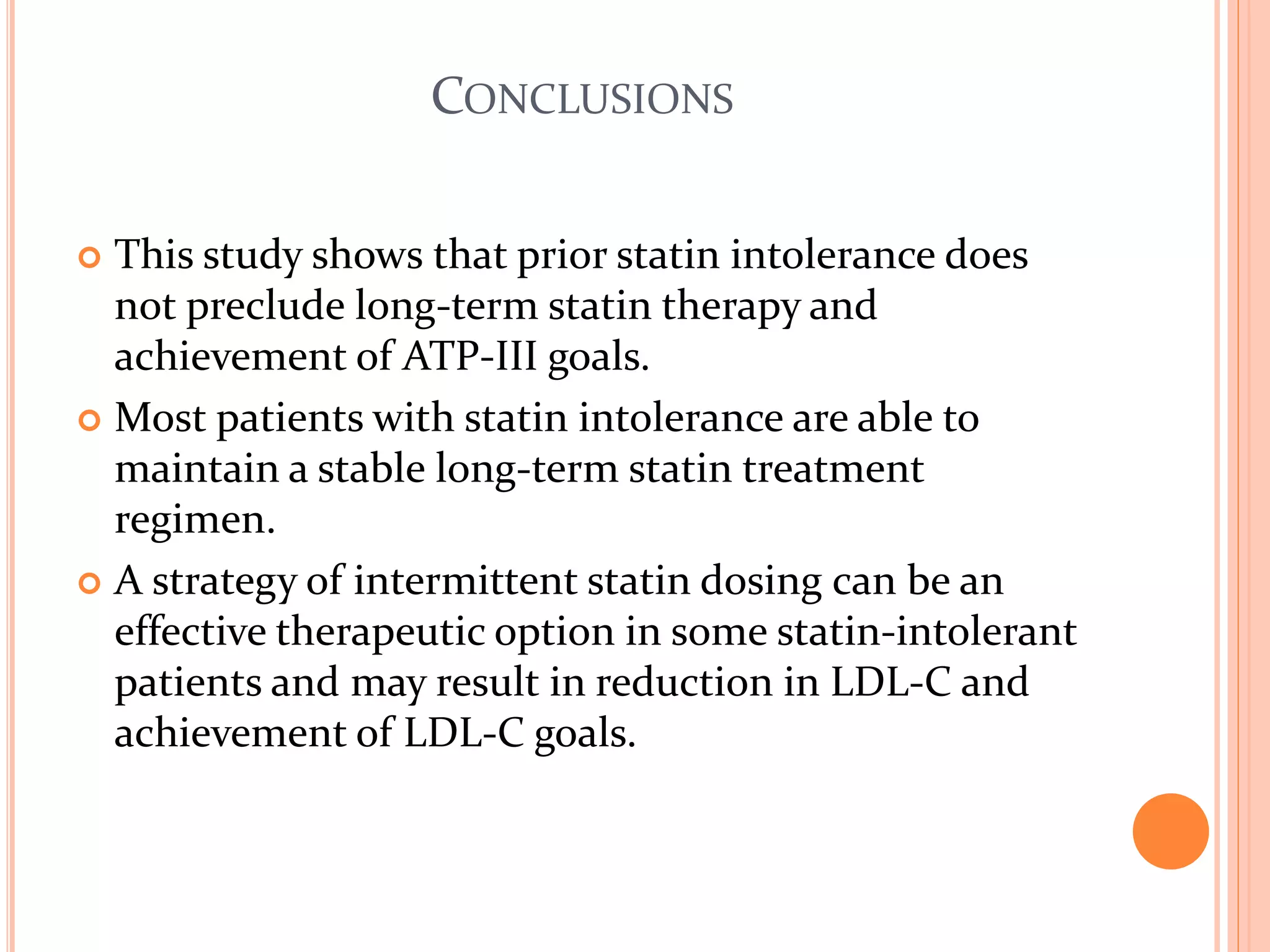This study evaluates treatment strategies for patients with statin intolerance, emphasizing the efficacy of intermittent statin dosing. It found that most patients can tolerate some form of statin therapy, achieving significant LDL-C reductions and goals. The findings suggest that intermittent dosing may improve tolerability and outcomes for statin-intolerant patients.
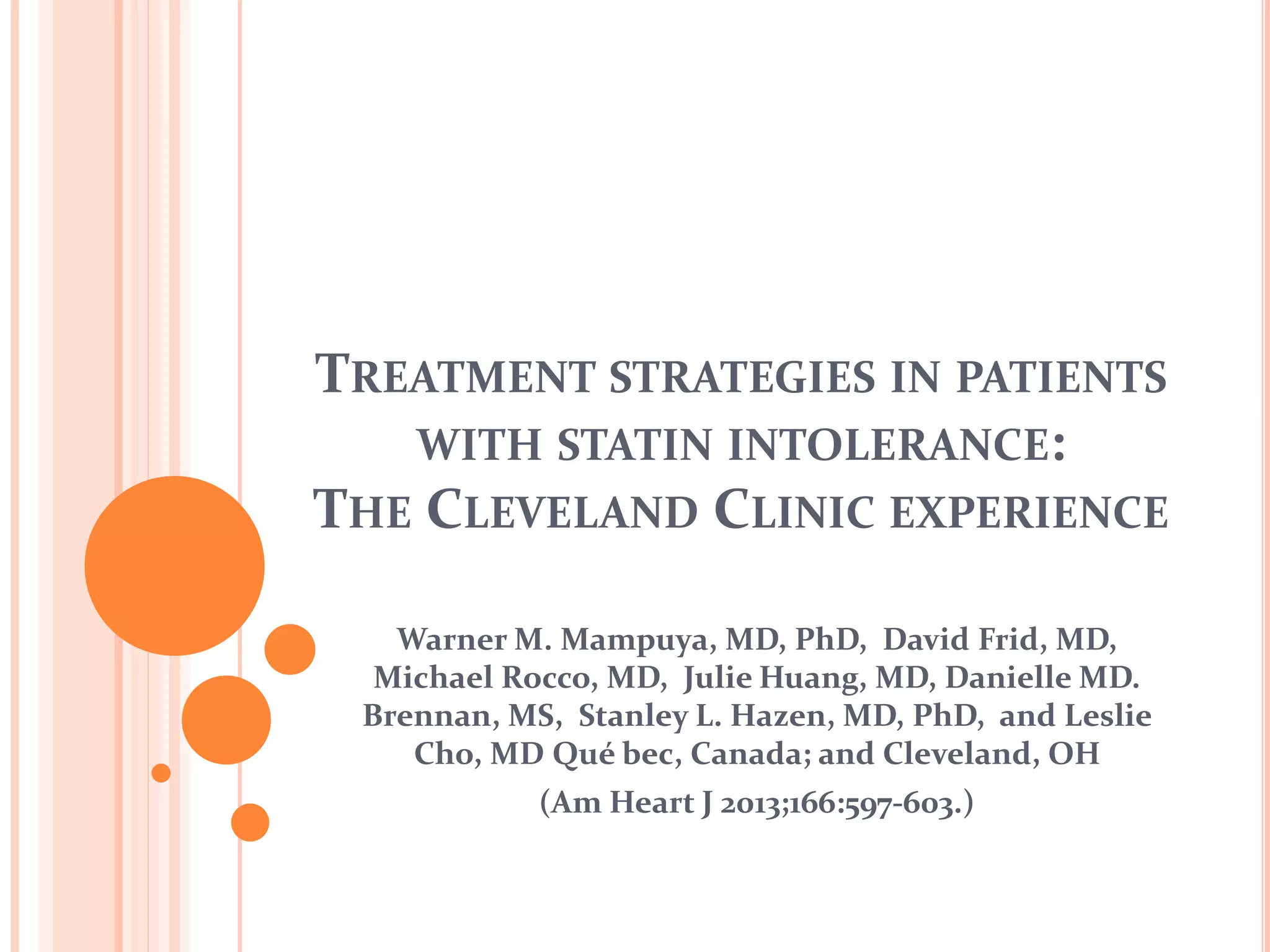

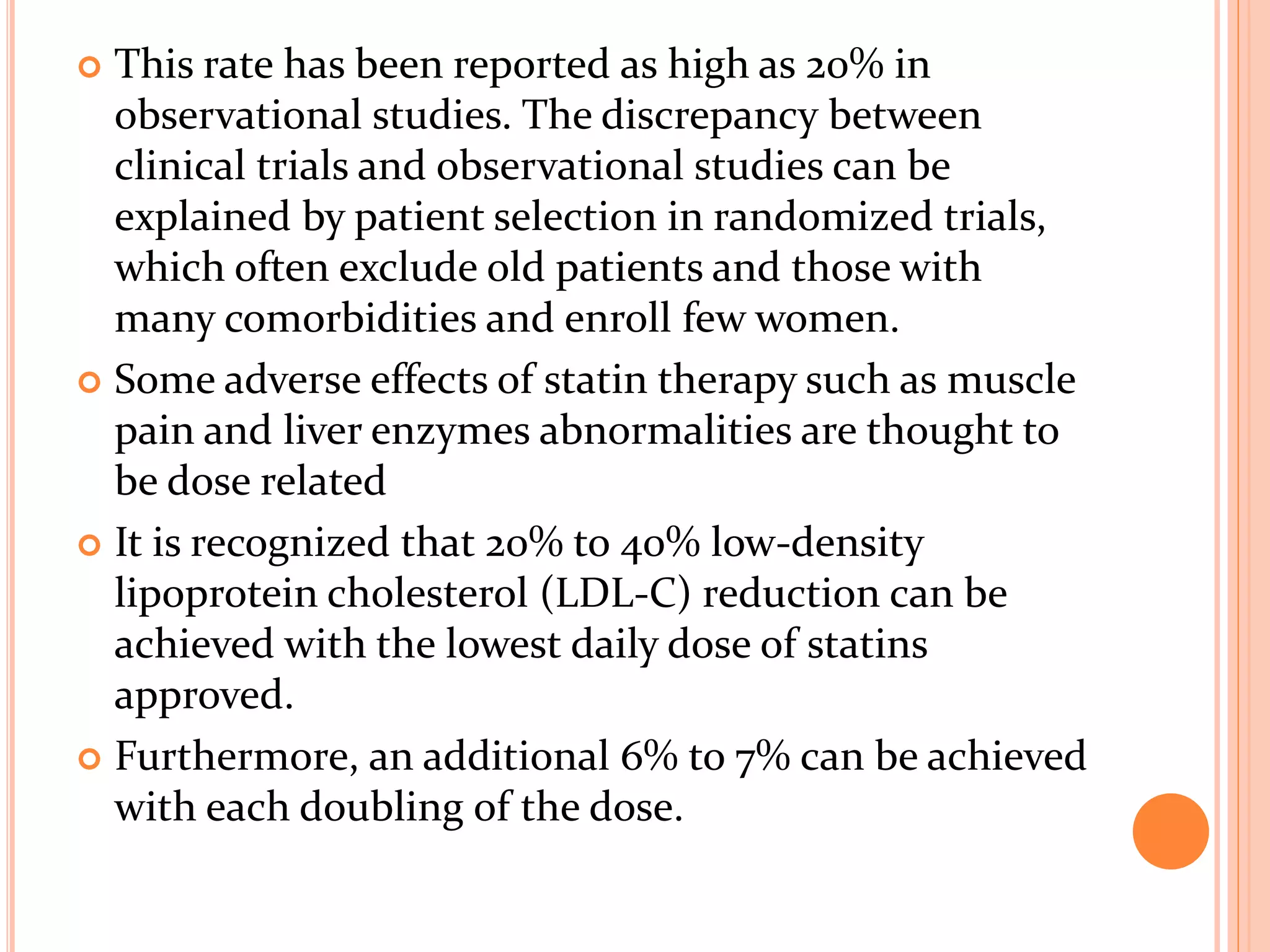

![METHODS
We reviewed the electronic records of patients referred to
the Cleveland Clinic Preventive Cardiology Section for
statin intolerance between January 1995 and March 2010.
At the time of baseline visit, demographic information,
medical history, physical examination, and laboratory data
are obtained and entered into an electronic medical
record.
Patients are classified as statin intolerant based on their
medical history and information provided by themselves
or the referring physician.
A comprehensive history of statin intolerance including
drugs involved, doses, and symptoms was taken.
We used American College of Cardiology/American Heart
Association definitions for myalgia (muscle ache or
weakness without creatinine kinase [CK] elevation),
myositis (muscle symptoms with CK elevation), and
rhabdomyolysis (muscle symptoms with CK >10× upper
limit of normal and elevation of creatinine).](https://image.slidesharecdn.com/treatmentstrategiesinpatientswithstatinintolerance-150402065028-conversion-gate01/75/Treatment-strategies-in-patients-with-statin-intolerance-5-2048.jpg)
